If I have a Course class, that has a collection of students (ICollection<Person>) as follows:
public class Person
{
public Person()
{
this.Courses = new HashSet<Course>();
}
public int PersonId { get; set; }
[Required]
public string PersonName { get; set; }
public virtual ICollection<Course> Courses { get; set; }
}
public class Course
{
public Course()
{
this.Students = new HashSet<Person>();
}
public int CourseId { get; set; }
public string CourseName { get; set; }
public virtual ICollection<Person> Students { get; set; }
}
I end up with this structure in the database (as expected):

(note the PersonCourses table)
However, in my example, I also want to add an instructor to the course.
This instructor is also a Person, who can attend courses just like everyone else, so I adjust the above classes as shown below:
public class Person
{
public Person()
{
this.Courses = new HashSet<Course>();
}
public int PersonId { get; set; }
[Required]
public string PersonName { get; set; }
public virtual ICollection<Course> Courses { get; set; }
public virtual ICollection<Course> InstructedCourses { get; set; }
}
public class Course
{
public Course()
{
this.Students = new HashSet<Person>();
}
public int CourseId { get; set; }
public string CourseName { get; set; }
public virtual ICollection<Person> Students { get; set; }
public virtual Person Instructor { get; set; }
}
What I was expecting to see is the same database structure as above, but with an additional table created that linked a person to many courses.
However, what I got was this:

(Note that the PersonCourses table has gone)
What I was Expecting/Hoping to see was similar to this:

It's probably worth stating that the reason I've not got a separate Instructor/Person class is that I'm expecting that any Person can create a course, and thus become an instructor for that course.
Firstly - Is this possible to achieve via code-first in EF? I'm assuming so..
Secondly - What is it I'm doing wrong?
Thirdly - Is it the weekend yet?
All help appreciated :)